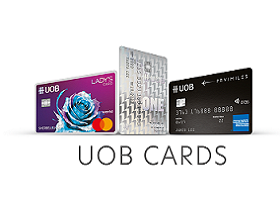Frequent traveller Mindy Kon goes overseas two to three times a year. But gone are the days when she would queue at money changers before her trips, or stuff her wallet with wads of foreign currencies.
In its place is her multi-currency mobile wallet, which the 31-year-old uses to swipe and tap her way through her trips.
“It’s more convenient, and I get much better exchange rates,” says Ms Kon, who works as a private tutor. “I don’t have to fumble with cash or worry about ending up with leftover coins I can’t exchange back.”
Her approach is a norm for the majority of travellers in the region.
A biennial study by Visa, released last year, revealed that 97 per cent of travellers in Asia-Pacific opted to go cashless when travelling.
Conducted from April to June 2023, the Visa Global Travel Intentions Study polled 15,467 respondents across 13 Asia-Pacific countries, including Singapore, Malaysia, Japan, and Australia.
Why is cashless travel now king?
Besides convenience, cashless payment methods offer better, and more transparent, exchange rates compared with money changers, says Ms Choo Wan Sim, head of Personal Financial Services, TMRW Digital, UOB.
Going cashless is also safer than carrying physical cash, Ms Choo says, explaining that travellers also don’t have to worry about losing the physical money on the trip.
Should they lose their debit or credit cards, they can contact their banks to block subsequent transactions.
For UOB customers, says Ms Choo, they can instantly block or set a limit on their credit and debit cards on the UOB TMRW banking app. The service is available 24/7. Customers will also receive alerts for unauthorised transactions to their cards, she adds.
Are there risks of relying solely on using digital payments overseas?
Potential fraud or unauthorised access is a key concern when using digital payment methods overseas, UOB’s Ms Choo says.
She advises travellers to safeguard their mobile devices and payment methods by activating biometric login, such as facial recognition. This measure is particularly important for mobile wallets and multi-currency cards, which are often linked directly to users’ bank accounts.
By adding this extra layer of protection, travellers can ensure their accounts remain secure even if their phones are lost or stolen.
Ms Choo also notes that while cashless travel is on the rise, its adoption isn’t universal. “It’s wise to still carry some cash,” she advises.
For Ms Kon, this was evident during her June trip to Thailand, where cash is typically the sole payment option at roadside stalls and mom-and-pop shops. The acceptance of mobile payment methods, such as Apple Pay and Google Pay, remains limited.
“Once, I was at a convenience store (in Thailand) without my cards and cash. It didn’t support Apple Pay, leaving me unable to pay.” To avoid such situations, she intends to always carry a small amount of cash as a backup.
How can travellers reduce or avoid transaction fees when making purchases?
When using your credit or debit cards overseas, always opt to pay in the local currency, advises Ms Choo.
This avoids dynamic currency conversion (DCC) charges that apply when you pay in your home currency.
Ms Choo also suggests converting currencies in advance when rates are favourable, particularly if you use a multi-currency wallet or card.
“(This way), your overseas spending and ATM withdrawals will be debited directly from your respective foreign currency account (so you can avoid paying conversion fees),” she explains.
What are some popular cashless payment methods among Singapore travellers?
- Physical or mobile debit and credit cards
More than half (57 per cent) of Singapore travellers surveyed in UOB’s Asean Consumer Sentiment Study 2024 say they prefer paying with credit or debit cards when overseas.
The regional study was conducted online in June 2024, polling 5,000 participants aged 18 to 65 from Indonesia, Malaysia, Singapore, Thailand and Vietnam.
Credit and debit cards are a favourite due to their added perks, says Ms Choo. Some cards allow users to transact directly with zero foreign transaction fees or earn attractive rewards like miles and cashback. For example, the UOB PRVI miles card offers up to 3 miles on overseas spending.
- Multi-currency cards and digital wallets
Besides competitive exchange rates and zero currency conversion fees, multi-currency cards and digital wallets give users the flexibility to convert, hold and manage foreign currencies.
Such features make multi-currency cards and digital wallets a preferred choice for travellers – such as Ms Kon – who seek convenience and cost savings.
When the Japanese currency hit a record low of about 120 yen against the Singapore dollar in July, Ms Kon topped up her multi-currency digital wallet and exchanged about $250 worth of yen.
“My husband and I were planning a trip to Japan at the end of the year, so I took advantage of the favourable rate (to exchange some money ahead of the trip).”
Ms Kon also appreciates the ability to top up her digital wallet via a linked debit card as needed during her trips. “I don’t have to stress about estimating how much foreign currency I’ll need before I go. Using the mobile app, I can simply convert currencies on the spot.”
UOB’s Ms Choo notes a growing preference for multi-currency cards and digital wallets. Between Jan and Oct 2024, more than $1 billion worth of conversion were made on the UOB FX+ debit card via the UOB TMRW app. This is almost three times more than the same period last year, she says.
The UOB FX+ debit card allows travellers to easily convert 11 popular currencies – including the US dollar, Japanese yen and euro – “at rates as good as what they see online”, Ms Choo says. From now till Dec 31, they can also enjoy 3.25 per cent cashback on all other foreign currency spent on the UOB FX+ debit card, with no cashback cap.
Users of the UOB FX+ debit card can also set alerts on the UOB TMRW app for their preferred rates, says Ms Choo, so they can be notified when the indicated rate becomes available. “
Such features give consumers unparalleled convenience and control, (enabling users to) easily track conversion rates and make immediate fund conversions.”
- QR payments
For Singaporeans travelling to nearby destinations such as Malaysia, Thailand, and Indonesia, paying for products and services has become more seamless with the launch of cross-border QR code payment in the last two years.
Travellers can now use their banking apps to scan QR codes at participating merchants to pay for products and services.
UOB saw a surge in cross-border QR payments as these payment methods gained traction across the region, Ms Choo says.
The bank’s cross-border QR transaction volume in the third quarter of 2024, ahead of the year-end travel season, grew by three times compared with the fourth quarter of last year. This is expected to rise further this month, Ms Choo adds.
Related stories
- Thoughtful tourism: Report highlights a growing demand among Singapore travellers for slow travel and wellness-related experiences, as well as sustainable travel options.
- Scan and pay in Japan: Singapore tourists heading to Japan will be able to pay for products and services using SGQR – via payment methods like GrabPay and PayNow – by 2025.
First published in Rethink Your Wealth, a series that provides practical insights and answers on wealth-related topics, to help you transform the way you approach finances.
This publication is for general information and general circulation only and does not have any regard to the specific investment objectives, financial situation and particular needs of any specific person. The information contained in this publication (including any past performance trends of certain investment products referred to in this publication) shall not be regarded as an offer, recommendation, solicitation or advice to buy or sell any investment product and shall not be transmitted, disclosed, copied or relied upon by any person for whatever purpose. Any description of investment products is qualified in its entirety by the terms and conditions of the investment product and if applicable, the prospectus or constituting document of the investment product. Nothing in this publication (including any articles referred to in this publication) constitutes accounting, legal, regulatory, tax, financial or other advice. If in doubt, you should consult your own professional advisers about issues discussed herein.
You may wish to seek advice from a financial adviser before purchasing units in any unit trust (the "Fund"). In the event that you choose not to seek advice from a financial adviser, you should consider carefully whether the Fund in question is suitable for you. Past performance of the Fund or the manager of the Fund (the "Fund Manager"), and any economic and market trends or forecast, are not necessarily indicative of the future or likely performance of the Fund or the Fund Manager. The value of units in the Fund, and any income accruing to the units from the Fund, may fall or rise. You should note that your investment is exposed to fluctuations in exchange rates if the base currency of the Fund and/or underlying investment is different from the currency of your investment. The Fund may use or invest in financial derivative instruments and you should be aware of the risks associated with investments in financial derivative instruments which are described in the Fund's prospectus. The UOB Group may have interests in the Units and may also perform or seek to perform brokering and other investment or securities-related services for the Fund. You should read the prospectus, available from the respective Fund Manager or its distributors, before deciding to subscribe for or purchase units in the Fund. Applications for units of the Fund must be made on the application forms accompanying the prospectus. Investments in unit trusts are not obligations of, deposits in, or guaranteed or insured by United Overseas Bank Limited ("UOB"), United Overseas Bank Asset Management Ltd, Fund Manager or any subsidiary or associate of UOB or any of their affiliates, or by any distributors of the Fund, and are subject to risks, including the possible loss of the principal amount invested. No representation or promise as to the performance of the Fund or the return on your investment is made. There is no guarantee that the Fund will meet its investment objectives.
The information contained in this publication, including any data, projections, underlying assumptions and any articles referred to in this publication, are based on certain assumptions, management forecasts and analysis of known information and reflects prevailing conditions as at August 2024, all of which are subject to change at any time without notice. Although every reasonable care has been taken to ensure the accuracy and objectivity of the information contained in this publication, UOB and its employees make no representation or warranty of any kind, express, implied or statutory, and shall not be responsible or liable for its completeness or accuracy. As such, UOB and its employees accept no liability for any error, inaccuracy, omission or any consequence or any loss/damage howsoever suffered by any person, arising from any reliance by any person on the views expressed or information herein.
This advertisement has not been reviewed by the Monetary Authority of Singapore.















